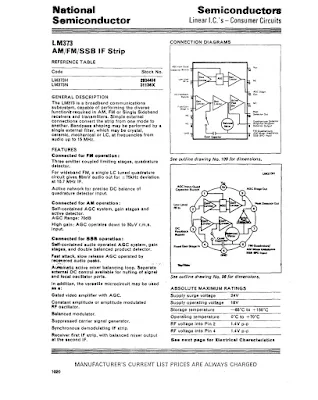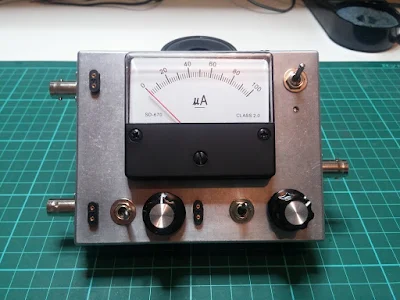 |
| 130k resistor inside heat shrink, across R-24 |
SPRAT 161 (Winter 2014/15) had a very intriguing article about the Heath HW-8 by Dave M0CEM. Dave wrote about a possible design error in the active filter of the receiver. The center frequency and gain shift significantly when you switch from "Wide" to "Narrow." I was very interested because for many years I have noticed this problem in my own HW-8. I just left it in "Wide" and never used the more narrow filter.
Dave did some excellent circuit detective work and determined that the problem was R24. He prescribed a change: instead of 82k it should be 49.8k. The placement of a 130k resistor across the 81k R24 would have the same effect.
Yesterday morning I installed Dave's mod. I did as he suggested and put a 130k resistor across R24. Brilliant! What a difference! In the past, I noticed a significant degradation in signal strength when I put the filter in the "Narrow" position. This doesn't happen now -- the response obviously does narrow, but the center freq stays the same.
It is really amazing to me that the Heath engineers made this error, and that it went uncorrected for so many years. There have been many, many modification articles for the HW-8 over the years, but I haven't seen any that really address this problem.
If anyone has more info on how this design error happened and why it went uncorrected for so long, please let me know.
Thanks to Dave and SPRAT for getting us back on the straight and narrow.






























